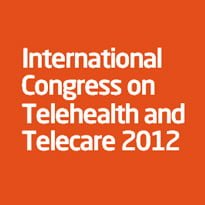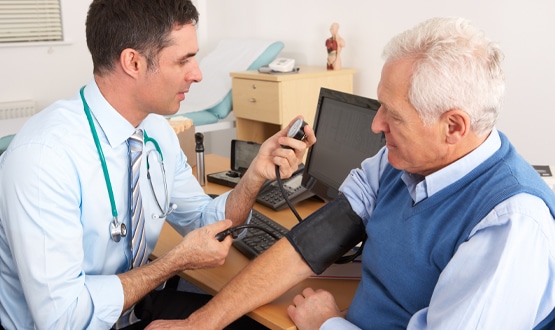Burstow puts WSD delay on publisher
- 7 March 2012

Peer reviewed results of the whole systems demonstrator programme are sitting with the British Medical Journal and will be released “over the next weeks and months”, care services minister Paul Burstow has promised.
Speaking this morning at the King’s Fund International Congress on Telehealth and Telecare 2012, Burstow re-iterated the high-level, ‘early findings’ from the WSD pilots that have been used to support the launch of the 3millionlives campaign.
He also told an audience keen to hear more solid evidence for the five year industry initiative that the most “staggering” outcome of the WSD pilots was a 45% difference in mortality rates between those benefiting from telehealth and those not.
The Department of Health set up three WSD projects in June 2009 to assess the benefits and impacts of telehealth and telecare technology on the NHS and social care services.
They were billed as two-year randomised control trials that would provide “robust evidence” for investment in the technologies.
So far, however, the DH has only published ‘early headline findings’ of the trials, when launching 3millionlives, which is being taken forward through a concordat with industry.
The lack of any peer reviewed reports on the trials so far has caused some concern.
Professor Nick Goodwin, a senior fellow at the King’s Fund think-tank, told eHealth Insider last month that the DH must publish the full results to avoid expensive mistakes in the roll-out of 3millionlives.
Burstow acknowledged there was “a lot of appetite to see the results” which he described as “compelling”. He expected papers to be published in peer reviewed journals “over the next weeks and months.”
“In the nicest of ways, I hope the British Medical Journal will get on with publishing the peer reviews,” the minister said. “They’re sitting with them at the moment. We want to get the information out there.”
Burstow admitted there were a number of barriers to telehealth and telecare being widely adopted, the first being a lack of evidence that it can make a difference.
However, he said the WSD programme had “comprehensively taken care of that.” He hoped people would be “inspired by” and “act on” the evidence from the WSD programme.
The trials involved more than 6,000 patients and 230 GP practices across Newham, Kent and Cornwall.
The ‘early headline findings’ report that the correct use of telehealth can deliver: a 15% reduction in A&E visits, a 20% reduction in emergency admissions, a 14% reduction in elective admissions, a 14% reduction in bed days and an 8% reduction in tariff costs.
Burstow also acknowledged that further barriers to the widespread adoption of telehealth and telecare were the “general lack of interoperability” and the upfront costs involved.
The DH is working on standards for interoperability and ways for providers and commissioners to pay for telehealth through ongoing contracts.
But Burstow said that as use of telecare products increased, costs would go down – as had already happened in the United States.
The government is also working on the issue of broadband coverage, investing £500m to support broadband roll-out into rural areas where many potential users of telehealth live.
The minister said seven out of ten inpatient beds were filled by people with long term conditions. Estimates were that using telehealth and telecare to reduce their time in hospital could save £1.2 billion over five years.
However, he said the 3millionlives campaign should not be driven by technology.
He said there was a danger that if it was, trusts might buy a lot of “kit”, which then gathered dust in cupboards, because it was not designed to fit into the lives of patients.
Burstow emphasised the importance of integrated care, with the patient in the centre.
“If this is the way we approach telehealth and telecare, the potential benefits for patients… and society as a whole, are truly enormous,” he concluded.
Stephen Johnson, deputy director – head of long term conditions at the DH, also spoke at the conference today.
He said he did not know when the WSD results would be published, but he understood a couple of non-major queries had to be dealt with first.
“This is going to be a long period of publication, starting from now and going forward,” he said.
EHealth Insider asked the BMJ for its reaction to the minister’s comments, but it said its publication process was confidential, so it could not confirm whether articles on telehealth were under consideration.




